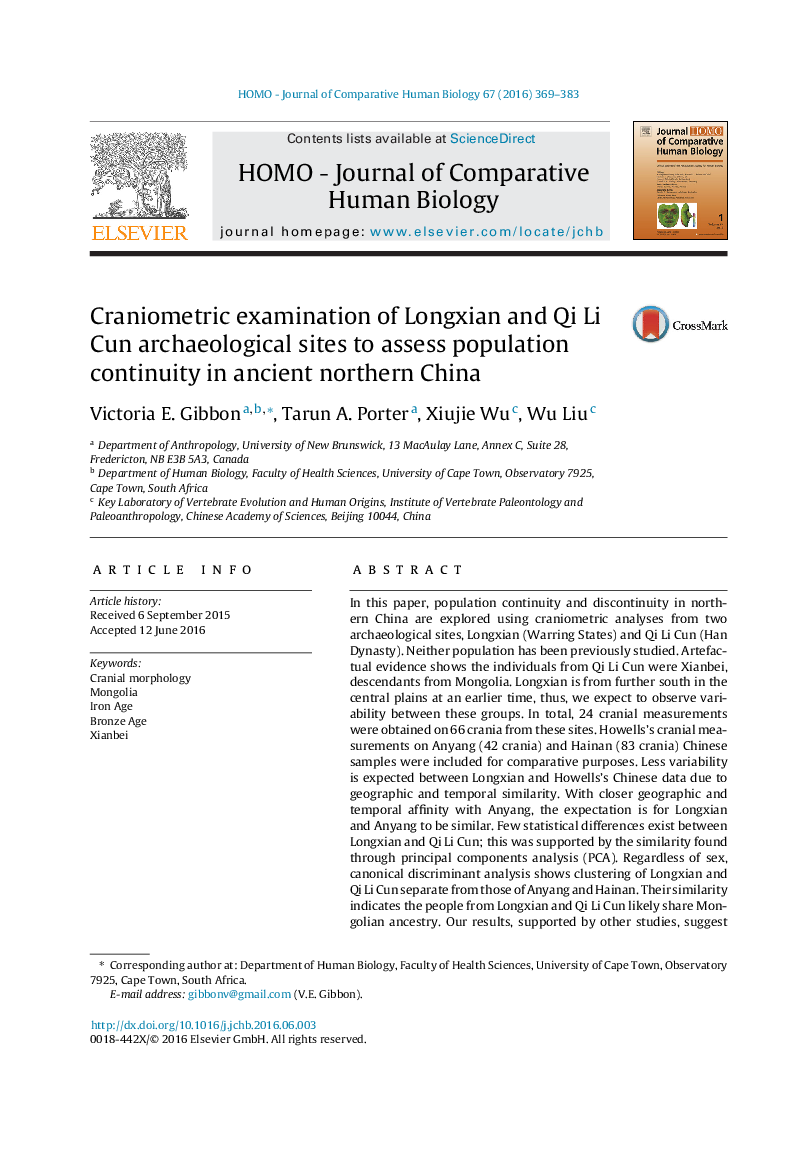| کد مقاله | کد نشریه | سال انتشار | مقاله انگلیسی | نسخه تمام متن |
|---|---|---|---|---|
| 4760432 | 1361884 | 2016 | 15 صفحه PDF | دانلود رایگان |

In this paper, population continuity and discontinuity in northern China are explored using craniometric analyses from two archaeological sites, Longxian (Warring States) and Qi Li Cun (Han Dynasty). Neither population has been previously studied. Artefactual evidence shows the individuals from Qi Li Cun were Xianbei, descendants from Mongolia. Longxian is from further south in the central plains at an earlier time, thus, we expect to observe variability between these groups. In total, 24 cranial measurements were obtained on 66 crania from these sites. Howells's cranial measurements on Anyang (42 crania) and Hainan (83 crania) Chinese samples were included for comparative purposes. Less variability is expected between Longxian and Howells's Chinese data due to geographic and temporal similarity. With closer geographic and temporal affinity with Anyang, the expectation is for Longxian and Anyang to be similar. Few statistical differences exist between Longxian and Qi Li Cun; this was supported by the similarity found through principal components analysis (PCA). Regardless of sex, canonical discriminant analysis shows clustering of Longxian and Qi Li Cun separate from those of Anyang and Hainan. Their similarity indicates the people from Longxian and Qi Li Cun likely share Mongolian ancestry. Our results, supported by other studies, suggest that despite temporal differences, Mongolians living in China during the Warring States and Han dynasty retained their cultural and genetic Mongolian identity. These data add valuable bioarchaeological information regarding the peopling of northern China during a crucial period of cultural and political change in the Early Bronze Age and Iron Age.
Journal: HOMO - Journal of Comparative Human Biology - Volume 67, Issue 5, October 2016, Pages 369-383